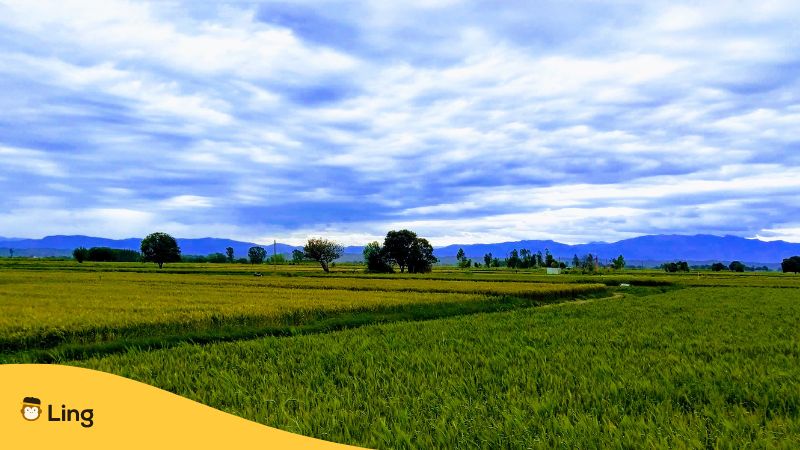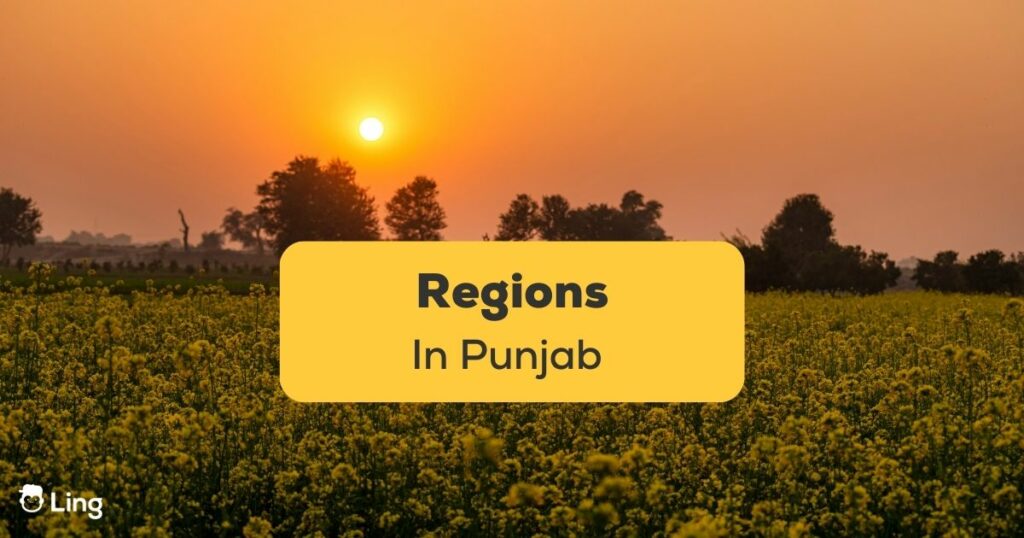Punjab, a state nestled in the northern part of India in South Asia, is a melting pot of cultural richness, scrumptious cuisine, and hospitable people. No wonder why you and thousands of foreigners are interested to visit this Asian country! So if you’re ready to embark on a journey through the lush and vibrant land of Punjab, then this article is for you! Here, we’ll be discovering the three main regions or ਖੇਤਰ (Khētara) in Punjab. From the bustling Punjabi streets of Amritsar to the regal city of Patiala, we’ll be exploring everything. Let’s start!
Regions In Punjab

Each region of Punjab offers a unique and diverse experience, waiting to be explored. From the entrepreneurial spirit of Doaba, the fertile land of Malwa, and the heart of Punjabi culture in Majha, there’s something for everyone. This diversity is what makes Punjab state such a rich and fascinating state, with each region possessing its own charm and character. By venturing into each of these regions, one can gain a deeper appreciation for the rich cultural heritage that is woven into the fabric of Punjab.
| Regions | Unique Characteristics | Cities |
| Majha Region | The Heart of Punjabi Culture | Amritsar, Pathankot, Gurdaspur, and Tarn Taran. |
| Doaba Region | The Land of Progress and Prosperity | Jalandhar, Kapurthala, Hoshiarpur and Nawanshahr |
| Malwa Region | The Abundant Southwestern Region | Ludhiana, Rupnagar, Patiala, Sangrur, Bathinda, Mansa, Firozpur, Fazilka, Rajpura, Moga and Ajitgarh |
Majha Region
At the center of Punjab lies Majha, a region that is considered the heartbeat of Punjabi culture. This region is home to the historical city of Amritsar, which is renowned for its Golden Temple, one of the holiest shrines for Sikhs. The fertile agricultural land in Majha is considered the breadbasket of Punjab, providing the state with its sustenance. The people of Majha are warm and welcoming, with a love for music and dance that is contagious.
Amritsar
A city that truly embodies the spirit of Punjab, Amritsar is a must-visit for those seeking to delve into the rich cultural heritage of South Asia. With its spiritual significance, vibrant energy, and historical significance, Amritsar is a city that will leave you with a profound appreciation for the soul of the Punjabi people.
The magnificent and radiant Golden Temple, located in the heart of Amritsar, is a beacon of peace and serenity that draws in millions of visitors from across the globe. Its gleaming gold-plated exterior, surrounded by the tranquil waters of the sacred pool, symbolizes unity and harmony and offers a tranquil refuge for the weary traveler.
But Amritsar is more than just the Golden Temple. The city is a treasure trove of cultural richness and historical significance, with monuments like the Jallianwala Bagh Memorial that stand as reminders of India’s fight for freedom. The vibrant bazaars, teeming with life and energy, offer a true taste of Punjabi culture, and a sampling of the delicious street food will leave your taste buds tantalized.
Doaba Region
Nestled between the two rivers Beas and Satluj is Doaba, a region that is known for its rich agriculture and horticulture. This region is also a hub of education and industry, with numerous colleges and universities located here. The people of Doaba are enterprising and forward-thinking, making them one of the most progressive communities in Punjab.
Hoshiarpur
Step into Hoshiarpur, located in the northeastern part of Punjab, and you’ll find yourself surrounded by history and culture. But the natural beauty of Hoshiarpur is just as breathtaking, with parks and lakes that will take your breath away. The people here have a love of nature and the arts, with local artists and craftsmen weaving their magic into every corner of the region.
Malwa Region
The southwestern region of Punjab, Malwa, is renowned for its fertile land and an abundance of water resources. This region is a significant contributor to the state’s agricultural production and is home to several of Punjab’s largest cities, such as Ropar, Patiala, Ambala, and Fazilka. The people of Malwa are known to be very hardworking and to enjoy sports and recreation in their free time.
Patiala
Patiala, located in the southeastern part of Punjab, was once the capital of the princely state of Patiala. This region is rich in cultural heritage and is known for its traditional attire, with the Patiala suit being a popular clothing item.
Patiala is also famous for its sweet dishes, with the famous Patiala lassi being a must-try for anyone visiting the area. The people of Patiala have a love for music and dance, with many local artists and musicians residing here.
Ropar
In the northeastern part of Punjab lies Ropar, a region that boasts a rich history and culture. The region is also known for its stunning natural beauty, with many natural parks and lakes located here. It’s also known as a popular excavation site of the Indus Valley Civilization. The people of Ropar have a love for nature and adventure, with many local residents participating in outdoor activities such as hiking and camping.
Fazilka
Fazilka, located in the southwestern part of Punjab near the border with Pakistan, is known for its rich agriculture. Crops such as wheat, rice, and cotton are grown in this region, which is also famous for its traditional folk music. And let’s not forget the warm hospitality of the Fazilkan people, who love nothing more than a good game of cricket or hockey! So if you enjoy those games, visit this place!
Ambala
Ambala district, located in East Punjab, is an integral part of Eastern Punjab, which is a rich and fertile region that is renowned for its agriculture and scenic beauty. The area is nestled between the Ghaggar River and the five rivers that flow through the region, providing ample water and fertile soil for the growth of crops.
Wrapping Up

That’s it for this blog post. If you are eager to learn more about the Punjabi culture or language then allow me to introduce you to Ling which is the fastest-growing language learning platform and has helped a myriad of students learn new languages. You can learn from creative flashcards, have a conversation with an interactive chatbot, and solve gamified quizzes to learn faster. So download the app now from the Google Play Store or App Store and start learning Punjabi right away.

















